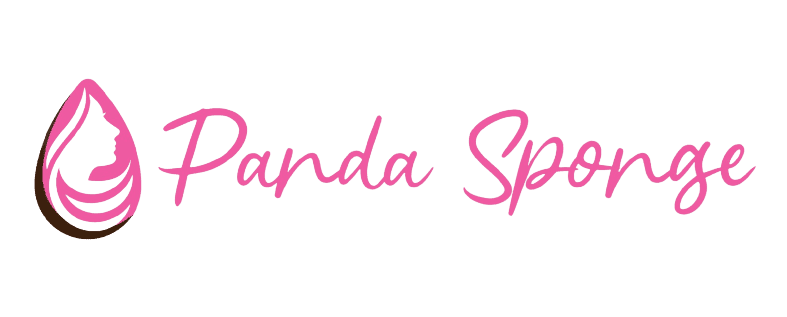Welcome to our blog, where we embark on a fascinating journey through the history of makeup sponges. These humble tools have been integral to the beauty industry for decades, revolutionizing how we apply and blend our favorite cosmetics. From their humble beginnings to the innovative designs we see today, makeup sponges have undergone remarkable transformations, shaping how we enhance our natural beauty. Join us as we delve into the intriguing history of makeup sponges, tracing their origins, exploring their evolution, and uncovering the secrets behind their enduring popularity.
The Birth of Makeup Sponges: A Game-Changer in Beauty
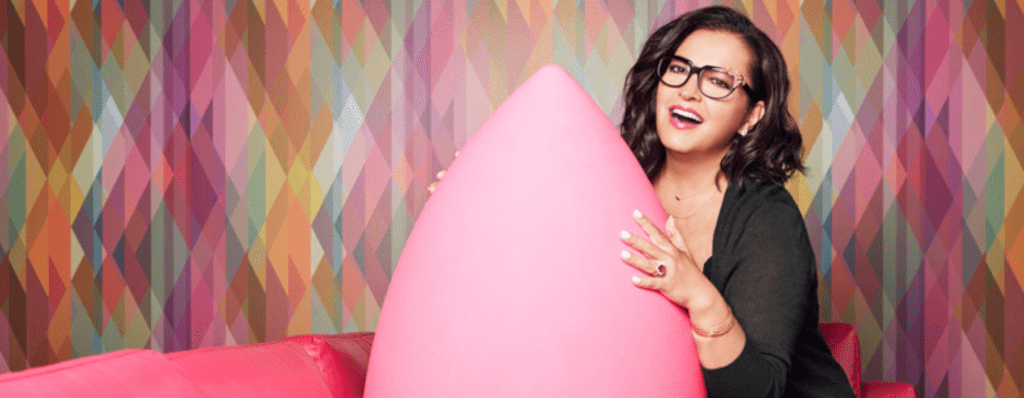


The modern makeup sponge as we know it today owes its inception to a creative makeup artist named Rea Ann Silva. In the early 2000s, Silva, realizing the limitations of existing tools, set out to create a revolutionary makeup sponge. She designed a teardrop-shaped sponge made from latex-free foam, featuring a unique texture that provided impeccable blending capabilities. The Beautyblender Sponge quickly gained popularity and revolutionized the makeup industry.
The Beautyblender’s success prompted other companies to develop their versions of makeup sponges, each with unique features and designs. Today, makeup sponges are available in various shapes, sizes, and materials. The most common material used is synthetic foam, which perfectly balances texture, durability, and ease of cleaning.
As per Grand View Research, the makeup sponge industry is projected to reach $2.5. Market to grow 6.8% yearly, valued at $1B by 2027.
Ancient Beginnings



Makeup has been used for centuries, dating back to ancient civilizations like the Egyptians, Greeks, and Romans. In these early times, makeup sponges were not the familiar foam-based tools we use today. Instead, people used various natural materials to apply cosmetics. One such material was the sea sponge harvested from the ocean. The sea sponge had a porous texture that allowed for the smooth and even distribution of makeup.
Innovation and Evolution
As we enter the 20th century, the modern makeup sponge is born. The iconic makeup artist Max Factor introduced the prototype in the 1920s. Factor created a wedge-shaped sponge made from latex, providing a more precise application of foundation and powder.
However, it was in the 1960s that makeup sponges gained widespread popularity. The legendary beauty icon Marilyn Monroe popularized the use of makeup sponges for a flawless finish, and their demand soared. This led to further advancements in their design and manufacturing.
The Game-Changing Beauty Blender
The Beauty Blender, introduced in 2003, marked a significant milestone in the history of makeup sponges. Created by makeup artist Rea Ann Silva, the Beauty Blender revolutionized the beauty industry. Its distinctive egg-shaped design, and ultra-soft texture made it a game-changer in makeup application.
The Beauty Blender quickly gained a cult following and became a must-have tool for makeup enthusiasts and professionals. Its unique shape allowed for seamless foundation, concealer, and other product blending, resulting in an airbrushed and natural-looking finish. This groundbreaking sponge became a staple in makeup bags worldwide.
Early Makeup Sponges: Natural Materials and DIY Solutions
For years, makeup sponges have been crucial in the beauty industry, helping people achieve a seamless and well-blended makeup look. Over the years, makeup sponges have evolved from simple cotton pads to more advanced and versatile materials. Exploring the history of makeup sponges reveals how they became an integral part of our beauty routines.
Early Uses of Makeup Sponges
The use of makeup dates back centuries, and while makeup sponges weren’t always present, alternative tools were employed to achieve similar results. In ancient Egypt, for example, people used small animal skins or palm leaves to apply makeup to their faces. These primitive methods served the purpose of blending and smoothing makeup, even though they lacked the convenience and precision of modern-day sponges.
Natural Materials in Makeup Sponges
As time progressed, the materials used in makeup sponges evolved. In the 20th century, natural materials like sea sponges gained popularity as makeup applicators. Sea sponges were pliable and porous, allowing for the smooth application of foundation, powder, and other makeup products. Their natural texture created an airbrushed effect, contributing to a flawless finish.
DIY Solutions
Many people relied on DIY solutions before the advent of commercially available makeup sponges. One popular method involved tearing up triangular pieces of foam from everyday household items, such as couch cushions or mattresses. These makeshift sponges were often dampened to apply foundation, concealer, and other makeup. While these DIY solutions were effective, they needed more durability and precision than professionally manufactured sponges.
The Evolution Makeup Sponges
Makeup sponges have become an indispensable tool in the beauty industry, providing flawless application and blending of cosmetics. Over the years, these sponges have evolved significantly, adapting to makeup artists and enthusiasts’ changing needs and preferences.
The Rise of Synthetic Makeup Sponges
As time progressed, the demand for makeup sponges grew, leading to the development of synthetic alternatives. In the 20th century, makeup sponges made from cellulose sponge material were introduced. These synthetic sponges were more durable, reusable, and affordable than their natural counterparts. They quickly gained popularity among makeup artists and consumers.
The Birth of the Egg-Shaped Sponge
The iconic egg-shaped makeup sponge has become ubiquitous in the beauty industry in recent decades. The Beautyblender, created by makeup artist Rea Ann Silva, revolutionized how makeup was applied. Its unique shape, resembling an egg, allowed for effortless blending and an airbrushed finish. The Beautyblender also introduced the concept of dampening the sponge before use, enabling seamless product absorption and a more natural-looking application.
The Rise of Multipurpose Sponges
In response to the growing demand for versatile makeup tools, brands began introducing multipurpose sponges with different textures and shapes. For instance, there are now sponges with flat edges for precise application, angled edges for contouring, and more minor points for reaching tight areas like the corners of the eyes.
Silicone Sponges and Beyond
In recent years, silicone makeup sponges have gained popularity as an alternative to traditional sponge applicators. These transparent, non-absorbent sponges offer easy cleanup and minimal product wastage. However, some users find them less effective for blending and prefer the softness and flexibility of traditional makeup sponges.
Advances in Makeup Sponge Technology: From Texture to Shape
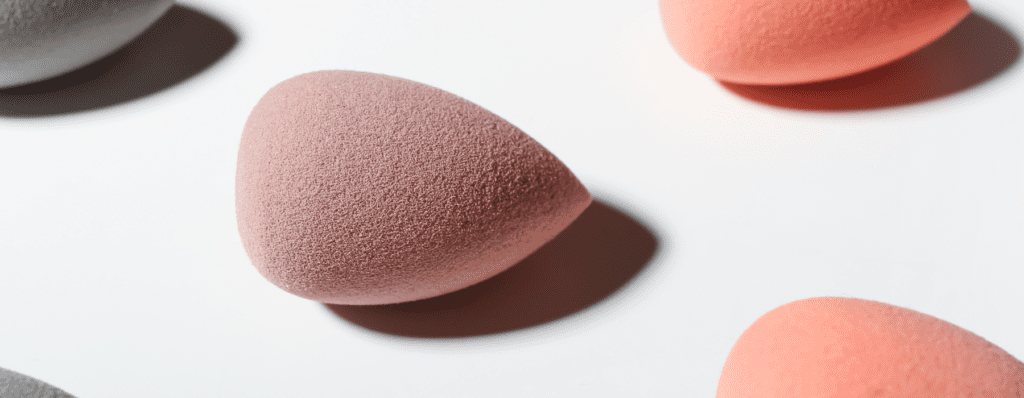


Incorporation of Technology
Technology integration has revolutionized various industries; the makeup industry is no exception. In the future, we may see makeup sponges that incorporate innovative technologies. For instance, there is potential for the development of intelligent sponges that can analyze skin conditions and adjust the amount or type of product dispensed accordingly.
Texture Evolution: From Basic to High-Performance
In the early days, makeup sponges were often made from natural materials like sea or cellulose. These sponges had a porous texture, allowing them to absorb excess product, but they lacked precision and control. As the demand for more precise applications grew, synthetic materials such as latex and polyurethane were introduced, offering a smoother and more even finish.
However, the real breakthrough came with the development of the non-latex hydrophilic foam. This revolutionary texture has become the gold standard in makeup sponge technology. This sponge has a unique composition lets it absorb enough product without wasting any, and it’s also excellent for blending.
Shape Innovation: From Traditional to Ergonomic
Traditionally, makeup sponges were shaped like wedges or makeup puffs, which limited their versatility and precision. However, advancements in shape design have led to the introduction of various innovative sponge shapes tailored to specific makeup application needs.
One popular shape is the teardrop or egg-shaped sponge. Its rounded bottom and pointed tip allow for precise application in hard-to-reach areas, such as around the nose and under the eyes. The flat sides of the sponge are ideal for blending larger areas like the cheeks and forehead.
Another notable advancement is the introduction of sculpted sponges with ridges and contours. The shelves help to reach crevices and create defined lines, while the flat areas ensure seamless blending. This innovation has revolutionized contouring, highlighting, and sculpting techniques, allowing for more professional-looking results.
The Future of Makeup Sponges
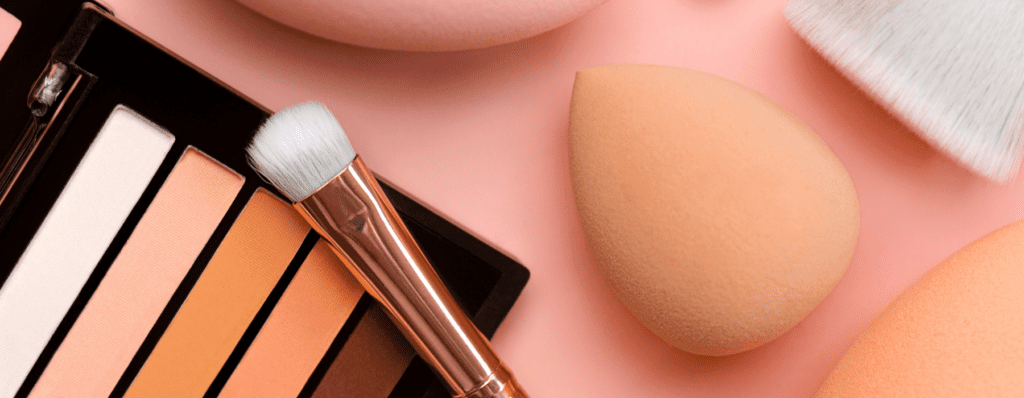


Innovation in Material Technology
Looking ahead to the future, makeup sponges will be significantly influenced by advancements in material technology. Beauty tool researchers and manufacturers always seek new materials to improve their tools’ performance and functionality. People are increasingly interested in switching to eco-friendly alternatives from conventional makeup sponges.
Advanced Textures and Shapes
The future of makeup sponges also lies in developing advanced textures and shapes. Traditional sponge designs have featured a teardrop shape, which is versatile for various makeup application techniques.
Enhanced Durability and Cleanliness
One of the common challenges with makeup sponges is their tendency to degrade or accumulate bacteria over time, requiring frequent replacement. However, advancements in material science and cleaning techniques may address these concerns. Future makeup sponges could be designed to have enhanced durability, ensuring a longer lifespan without compromising their performance.
Final Words
In conclusion, the history of makeup sponges showcases the evolution of beauty tools and techniques throughout the ages. From ancient civilizations to the modern era, makeup sponges have played a crucial role in achieving flawless makeup looks. And for those seeking wholesale options, Panda Sponge stands as a reliable supplier, offering a comprehensive solution from production to doorstep delivery. Embrace the rich history and embrace the convenience of makeup sponges to enhance your beauty routine.
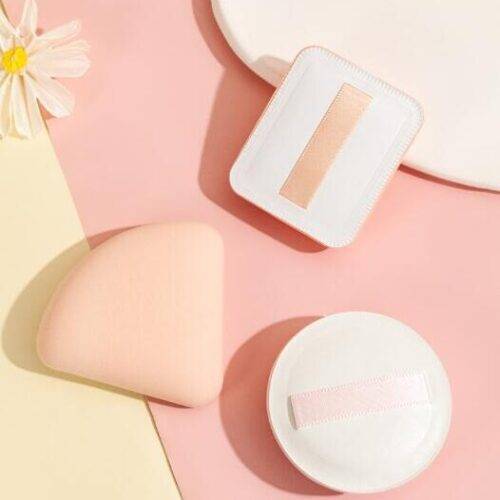


Get a Quote
Custom Makeup Sponge and Puffs



Maggie Peng serves as the esteemed Product Manager at Panda Sponge, where she has garnered a wealth of experience and expertise over the course of five years. With a primary focus on product design, testing, and development, Maggie has consistently exhibited her prowess in these domains.


